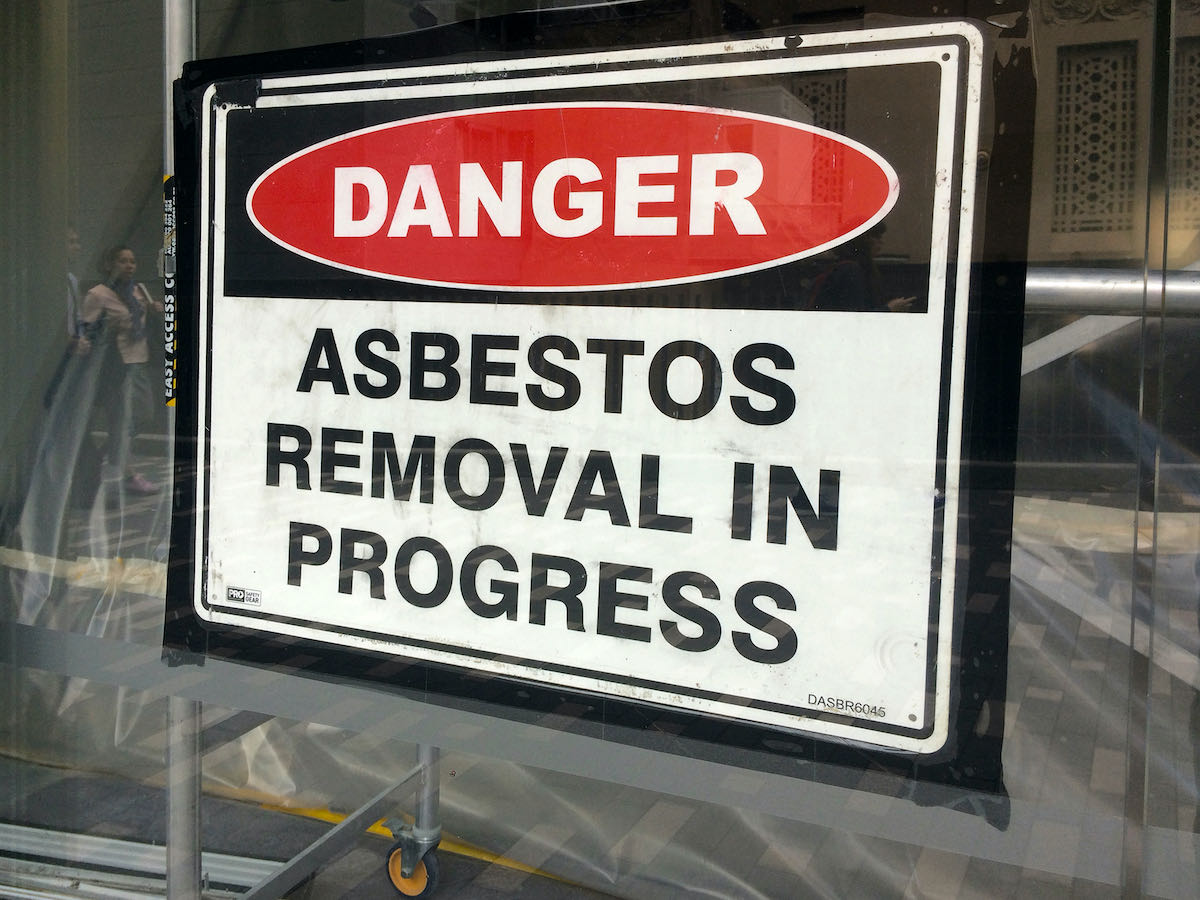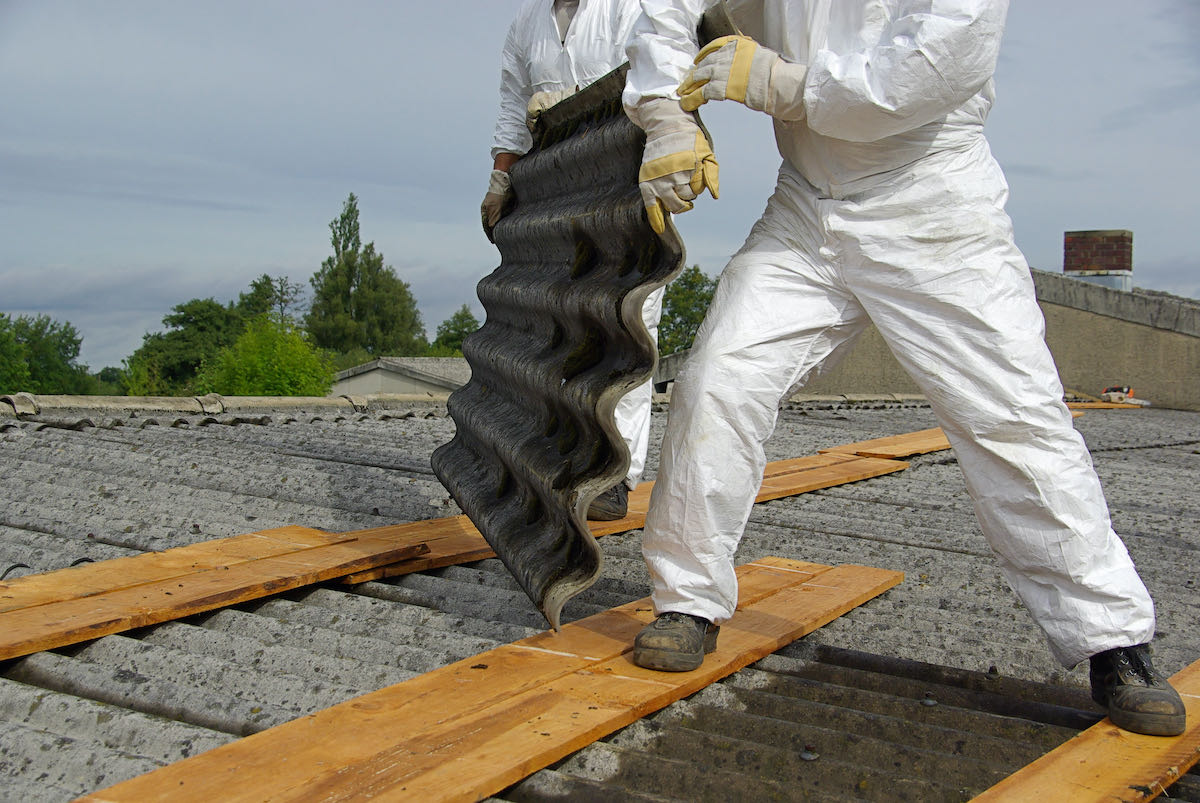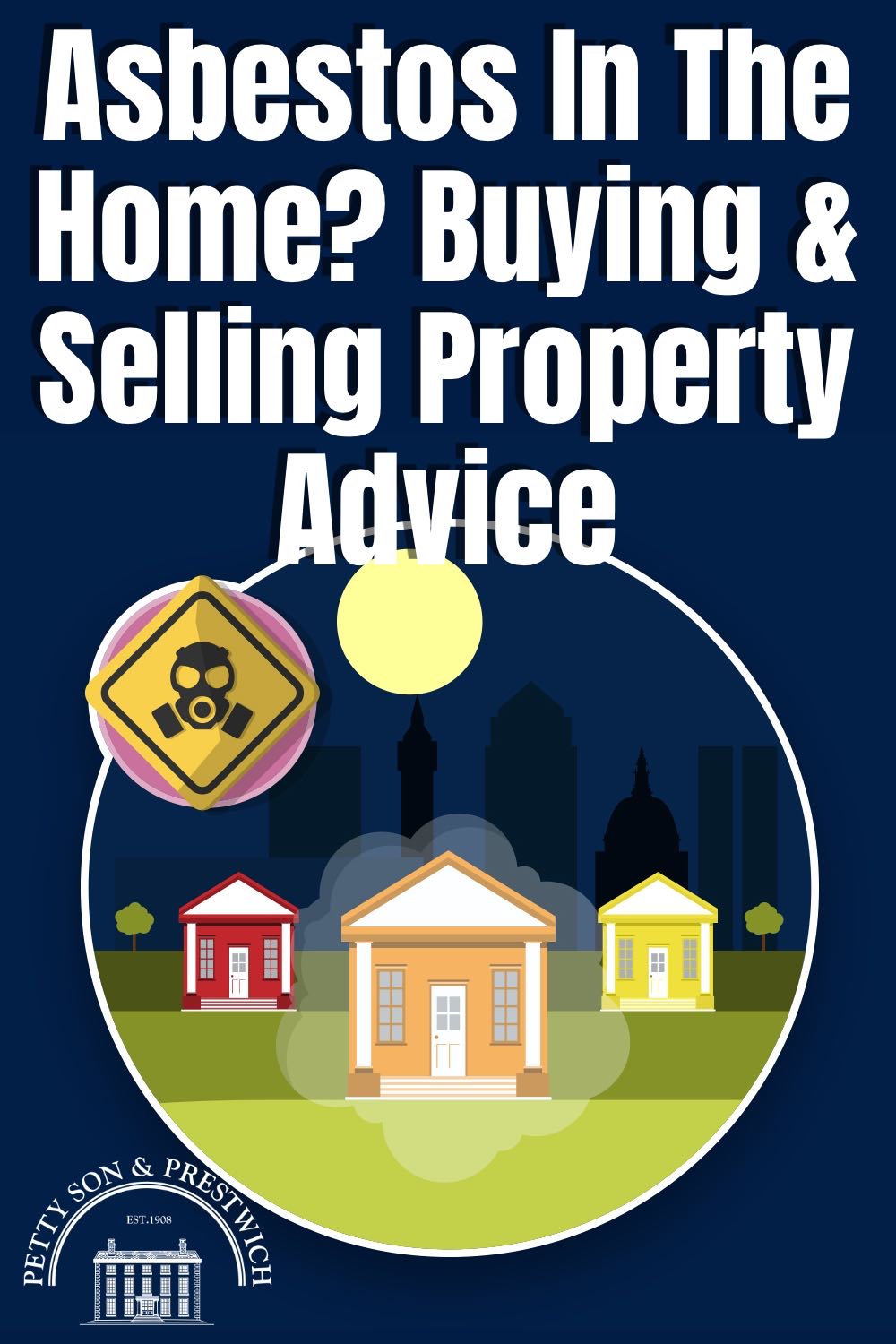The word asbestos is now synonymous with danger, but how much do you really know about this once popular building material? Today’s post is all about asbestos in the home and how it can affect property transactions, from both a buying and selling standpoint.
First, though, let’s get a few fundamentals out of the way, shall we?
What is asbestos?
Contrary to what you might assume, asbestos is actually a naturally occurring mineral rather than a man made product. Asbestos is also somewhat of an umbrella term, as it covers six different types of fibrous minerals: chrysotile, amosite, crocidolite, anthophyllite, tremolite and actinolite.
Which properties might contain asbestos?

The age of the property in question will be a good indicator as to whether or not it may contain asbestos. As the use of chrysotile asbestos as a construction material was outlawed back in 1999, and crocidolite and amosite asbestos were banned in 1985, any property built after the millennium should be free from the hazardous mineral.
For properties built before 1999, however, there’s a good chance some form of asbestos may be present.
Why was asbestos outlawed?
Despite being mined for over 4,000 years, asbestos only relatively recently became a popular building material. The Industrial Revolution kicked things off and by the 1970s, the height of asbestos consumption in the UK, we were importing in excess of 170,000 tonnes of the stuff every year.
Asbestos exposure has long been considered harmful to humans, even the Romans documented a ‘sickness of the lungs’ associated with the mineral. Unfortunately, little was done about its usage, even though increasing numbers of people were falling ill and dying by the 1920s and 30s.
We now know that inhaling asbestos fibres can cause a number of problems, including asbestos related cancer, mesothelioma, and asbestosis. To give you an idea of just how prevalent asbestos once was, we’re still seeing over 5,000 deaths from exposure every year in the UK, a number that exceeds those killed in road traffic accidents.
Three of the six types of asbestos - chrysotile (white asbestos), amosite (brown asbestos), crocidolite (blue asbestos) - were widely used across the UK, until amosite and crocidolite were banned in 1985, with chrysotile following suit in 1999. Although now outlawed, asbestos remains in thousands of buildings throughout the country.
Why was asbestos used so frequently by builders?
Put simply, asbestos is a brilliant building material, albeit a deadly one. It’s fire resistant, tough, can absorb soundwaves, provide insulation, was widely available before the ban, and it cost builders next to nothing to buy, all of which made it very attractive to the construction industry.
It is estimated that asbestos has been used in 3,000+ different products over the years, including things like adhesives, cements, textiles, flooring, roofing felts, and insulation products.
Asbestos didn’t stop with the construction industry, either. It has also been used in things such as talcum powder and cigarette filters in days gone by. Frightening stuff.
Where is it common to find asbestos in the home?

Thanks to its almost universal usage and the wide array of products that contain it, asbestos could potentially turn up anywhere in residential properties built before 1999. That said, some of the most common places asbestos is found in the home include:
- Roofs, either corrugated roofing or felt lining
- Flooring
- Ceiling tiles
- Artex
- Airing cupboards
- Around boilers
- Behind fuse boxes
- Pipe lagging
- Soffits
- Around water tanks
- Behind fireplaces
- Guttering
- Panelling
How might asbestos in the home affect sellers?
If you are aware of asbestos in your property you’re probably wondering how it might affect you should you wish to sell up and move on. A few of the most common questions sellers have about selling property with asbestos are addressed below:
Is it illegal to sell a property with asbestos?
Absolutely not, although you will have to disclose its presence if you are already aware of it. The Property Misdescriptions Act of 2013 states that it is an offence to withhold such information, and failing to abide by the law could invalidate the sale and result in prosecution.
What about if I’m unaware of asbestos, but a survey says it’s present?
If a buyer’s survey uncovers asbestos and you were previously unaware of it, there are no repercussions. There are no laws stating that you need to be aware of asbestos in your property before a sale.
Surveyors often encounter asbestos whilst conducting surveys for buyers and it can negatively affect the sale, so it’s a good idea to have your own survey done before going to market. This will ensure you know exactly where you stand and prevent any unwanted surprises further down the road.
Can asbestos stop a property sale altogether?
Potentially, yes, but there are a number of variables to be taken into consideration, so it’s impossible to give a definitive answer. Things like the current condition of the asbestos and the buyer’s attitude towards finding the mineral in the home will all have an effect on whether or not the sale will proceed.
From a legal standpoint, however, it’s important to remember that there’s nothing stopping you selling a property containing asbestos.
Does asbestos affect property prices?
It can, but the extent to which the presence of asbestos will affect property value will also depend upon a number of factors, such as how much is present, where it is, and what state it’s in.
As removal of asbestos is so expensive, property prices are often adjusted to reflect the cost of the work involved to be rid of it. It may be worth considering getting experts in to remove it rather than take a drop in price, although this will vary from case to case.
What about buyers? Should you buy a house with asbestos present?
A blanket answer here would be incorrect, but buyers certainly shouldn’t be put off altogether if the home they wish to buy turns out to contain asbestos. Although asbestos has now been proven to be dangerous and is universally considered as a hazardous material, that doesn’t mean you should pull out immediately.
As we’ve covered above, asbestos is remarkably common in UK homes, but it only becomes dangerous if disturbed or damaged. As it is the fibres that are hazardous when breathed in, asbestos in a solid and stable state is relatively safe, but any disturbance or damage, such as drilling a hole for example, could result in dust being released and inhaled, which is obviously to be avoided.
Therefore, finding out that your prospective property purchase has asbestos present isn’t automatically the end of the world, but it is something to be aware of. You should use the results of your survey to negotiate a price drop to cover the cost of removal, but pulling out blindly without full consideration isn’t advisable.
It’s also important to remember that if the asbestos is in good condition, it could be years before it needs to be addressed. That said, when it does need to be removed, it will cost you a pretty penny to do so. For more information on disposing of asbestos locally, visit gov.uk’s page and enter your postcode.
If you are looking to buy or sell in or around Wanstead, East London, or simply want some solid property advice from a firm you can trust, get in touch with Petty’s today. We have been serving the good people of E11 since 1908 and would love to add you to the thousands of satisfied customers we’ve assisted over the last 100+ years. Give us a call!
